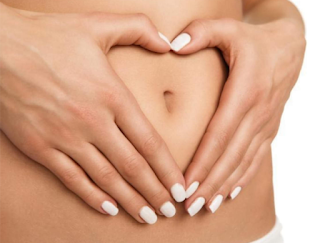What Happens At Conception :
At the moment of conception a sex cell of father, called a Spermotozoon, unites with a sex cell of the mother, called an Ovum, and fertilizes it.
Sperm meets egg, egg meets uterus, and boom: pregnancy.
It's much more complicated than “sperm meets egg”
Only a tiny fraction of the sperm that entered the vagina make it to the fallopian tube. It takes about 6-12 days for the fertilized egg to travel to the uterus and attach to the uterus in a process known as implantation.
This is what most of us learn about how a pregnancy happens.
While that is the bare bones of how conception works, there’s a lot going on in a person’s body that helps—or sometimes hinders—conception.
Here, you will know what different parts of the body are doing at different times to prepare for pregnancy when it occurs from penis-vagina sex or from other forms of insemination, such as artificial insemination.
Be prepared: bodies, sperm, and eggs do a lot of work to achieve a pregnancy.
Before diving into conception, you should brush up on your knowledge of eggs and sperm, and of how ovulation works. Ovulation is when an egg is released from the ovary, and is critical to the whole process.
Before sex: how the cervix and vagina prepare for pregnancy :
The cervix is what connects the vagina to the uterine cavity. It has glands that produce cervical fluid (also called cervical mucus), which passes through the vagina. You sometimes might see cervical fluid on your underwear or on toilet paper as you wipe.
Cervical fluid characteristics change throughout the menstrual cycle :
Between your period and ovulation: As estrogen levels rise, the amount of cervical fluid increases and becomes wetter, thicker and cloudier.
Around ovulation: Cervical fluid often looks like egg white: it’s thin, slippery, and stretchy.
So why does this matter? In short, sperm swim best through wet and stretchy cervical mucus. If this fluid is absent or is thick and sticky, sperm have a hard time passing the cervix.
The period between when cervical fluid is ideal for sperm and ovulation is known as the fertile window.
Finally, sperm have an effect on the vagina. Normally the vagina is somewhat acidic, in order to protect against infection . When exposed to sperm, the vagina becomes less acidic.
Before the sperm arrive: how the uterus prepares for pregnancy:
During your period, the uterus sheds the endometrium, which built up during the
previous menstrual cycle. After shedding, the endometrium waits for estrogen (produced in the ovaries) to rise. Estrogen causes the lining of the uterus to thicken by stimulating the endometrial cells to divide.
After ovulation, the endometrium prepares for the possible arrival of a fertilized egg. In response to increasing levels of progesterone:
endometrial cells stop dividing and start growing larger the number of arteries increases uterine contractions are suppressed.
Also, the rise in progesterone after ovulation also signals to the endometrium to release little sugar-filled sacs into the uterus to nourish the incoming egg .
Sperm try their best:
If a person has unprotected penis-vagina sex during their fertile window, probably at least some sperm will make it’s way through the cervix and into the uterus.
Although sperm use their tails to swim through cervical mucus in the vagina and cervix, it’s actually the uterus that moves sperm through it and into the fallopian tubes .
Sexual activity can cause the brain to release the hormone oxytocin, which causes the innermost layer of the uterus to contract and push the sperm onwards . The uterus also has little finger like structures called cilia that help move the sperm, hopefully, towards the egg .
The uterus might not be an entirely safe place for sperm, though.
Sperm triggers an immune response when it enters the uterus. Once sperm enter, the number of white blood cells increases, and they begin to attack the dying sperm, though it’s possible they may also attack healthy sperm too.
Also, sperm may end up going up the wrong fallopian tube. The vast majority of the time, a person only releases one egg from one ovary. That means that only one of the two fallopian tubes will have eggs, and some sperm will have gotten it wrong.
Only a tiny fraction of the sperm that entered the vagina make it to the fallopian tube.
Fertilization: after sperm arrive, the magic happens in the fallopian tubes.
As the fallopian tube pushes the egg towards the uterus, cilia push the sperm towards the egg. Progesterone and estrogen influence this process by increasing the number of cilia and how fast they move.
The egg and surrounding cells produce a chemical that attracts sperm. Sperm may be attracted to the temperature at the ovarian-end of the fallopian tube, which tends to be warmer.
As they travel through the fallopian tubes, sperm gain the ability to fertilize an egg. They undergo two processes: capacitation, where its outer layer is changed, and
hyperactivation, which changes the way the sperm’s tail moves.
Although it’s come so far and has already changed, the sperm still has work to do: specifically, breaking through the barriers around the egg.
To enter the egg, the sperm has to do two things:
🔵 Break through a group of cells known as the cumulus oophorus that surround the egg. The sperm dissolves these cells using an enzyme.
🔵 Break through the outer membrane of the egg. The sperm essentially fuses to and digests this membrane using an enzyme. Once a sperm has penetrated an egg, this membrane changes, and becomes impenetrable to other sperm.
Now attached, the sperm’s nucleus—where the chromosomes are stored—enters the egg cell looking for the egg’s nucleus.
Once it meets the egg, the nuclei from the egg and sperm merge and share their genetic material.
Implantation: what happens after the egg is fertilized:
It takes about 6-12 days for the fertilized egg to travel to the uterus and attach to the uterus in a process known as implantation. The egg is pushed back towards the uterus by the cilia . The egg must attach to the uterus to become the uterus, the egg has been dividing and forming a few different structures.
Once it’s big enough in the uterus, the egg transitions from being known as a zygote to being called a blastocyst.
When does a pregnancy officially begin?
When the uterus detects the blastocyst, it releases enzymes to break down the blastocyst’s outer membrane.
Once that barrier is broken down, the blastocyst can attach to the endometrium.
This is when a pregnancy officially begins.
It’s a complicated process
Sometimes, though, a fertilized eggs can't make it to implantation.
For every 10 fertilized eggs, between 4 and 6 won’t make it to implantation.
These losses generally aren't considered miscarriages, as most healthcare professionals consider a pregnancy to have begun at implantation. However, people who think or know they lost a fertilized egg (such as people using artificial reproductive technologies) may consider this to be akin to a more traditional miscarriage.
As you can see, there’s a lot of steps in this process, and if any of them don’t go exactly right, pregnancy may not occur.
Sometimes, the egg attaches somewhere else, like to the fallopian tube, and the pregnancy will not be viable. This is called an ectopic pregnancy and should be treated as a medical emergency.
References
Jones RE, Lopez KH. Human reproductive biology. 3rd ed. Burlington, MA: Elsevier; 2006.Hatcher RA, Nelson AL, Trussell J, et al. Contraceptive Technology (21st edition). New York:Ayer Company Publishers. 2018.Former Science Writer for Clue
by Maegan Boutot, Former Science Writer for Clue — June 20, 2019
Reviewed by Anna Druet, Former Science and Education Manager
Vitzthum VJ. Evolution and endocrinology: The regulation of pregnancy outcomes. In: Elton S, O'Higgins P, editors. Medicine and evolution: current applications, future prospects. 2008 Jun 2. Chapter 6.Boklage CE. Survival probability of human conceptions from fertilization to term. Int J Fertil. 1990 Mar 1;35(2):75.
Bigelow JL, Dunson DB, Stanford JB, Ecochard R, Gnoth C, Colombo B. Mucus observations in the fertile window: a better predictor of conception than timing of intercourse. Human Reproduction. 2004 Apr 1;19(4):889-92.Cone RA. Barrier properties of mucus. Advanced Drug Delivery Reviews. 2009 Feb 27;61(2):75-85.Suarez SS, Pacey AA. Sperm transport in the female reproductive tract. Human Reproduction Update. 2006 Jan 1;12(1):23-37., Kunz G, Beil D, Huppert P, Leyendecker G. Oxytocin–a stimulator of directed sperm transport in humans. Reproductive Biomedicine Online. 2007 Jan 1;14(1):32-9.
Moore KL, Persaud TVN, Torchia MG. The Developing Human E-Book: Clinically Oriented Embryology. Elsevier Health Sciences; 2016.
Wilcox AJ, Baird DD, Weinberg CR. Time of implantation of the conceptus and loss of pregnancy. New England Journal of Medicine. 1999 Jun 10;340(23):1796-9.
Raising family and social awareness:
(Depressed person is not a
burden for your family,
it is your responsibility to love
and care them)
My concern to reach this
massage to everyone..
Use natural painkiller remedy " No
" pain goes without side effects.
Get relief from Osteochondrosis and Migraine. Detox your body from toxin and keep balanced hormone.?
Lavender Dreamyy fb page
https://cgd-sharia.blogspot.com/2018/11/stop-painkillers-grab-natural.html
Follow Us On:
Facebook
Facebook
Instagram
Twitter
You tube
Please share and subscriber my blog.
Follow Us On:
You tube
Please share and subscriber my blog.















Comments